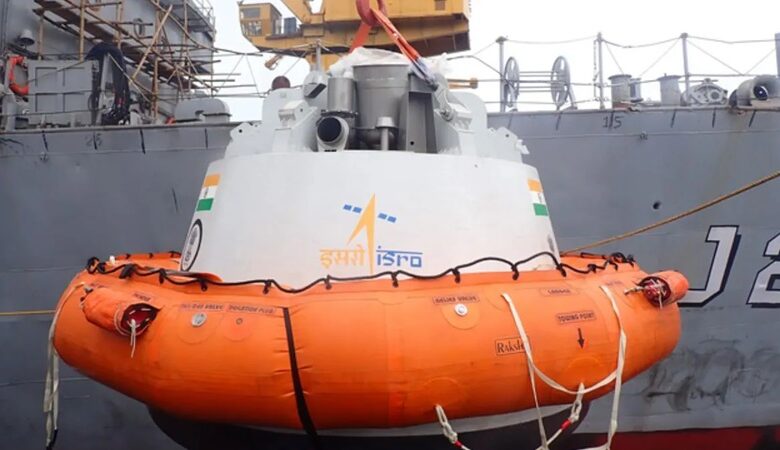India’s Gaganyaan Project: Uncrewed Crew Module Sent for Space Exploration
News Mania Desk / Piyal Chatterjee / 25th January 2025

India’s path to human space exploration took a significant step forward with the sending of the Crew Module for the inaugural uncrewed mission of the Gaganyaan project. The module, coupled with a liquid propulsion system at the Liquid Propulsion Systems Centre (LPSC) in Bengaluru, has been delivered to the Satish Dhawan Space Centre in Sriharikota. This advancement, realized on 21 January 2025, is a component of India’s initiatives to achieve human spaceflight abilities.
As stated by ISRO, the Crew Module Propulsion System (CMPS) features a bi-propellant Reaction Control System (RCS). This system is crucial for accurate three-axis management—pitch, yaw, and roll—throughout the descent and re-entry stages. Control operations will start after the service module is detached and will carry on until the parachute-based slowing mechanism is activated. The propulsion system consists of 12 thrusters, providing 100 Newtons of thrust each, in addition to high-pressure gas tanks, a mechanism for propellant feeding, and related fluid control parts.
The development of the module also required the incorporation of the Crew Module Uprighting System (CMUS), created by the Vikram Sarabhai Space Centre (VSSC). The module will now proceed with additional assembly stages, such as avionics integration, electrical wiring, and a set of inspections at VSSC prior to its delivery to the U R Rao Satellite Centre in Bengaluru. The concluding stage will concentrate on combining the Crew Module with the Orbital Module. ISRO has highlighted that the uncrewed G1 mission serves as a preparatory measure for sending humans into space, allowing for the validation of essential systems and technologies crucial to the Gaganyaan initiative. With this achievement, India moves nearer to becoming part of the group of nations possessing human spaceflight capabilities.






